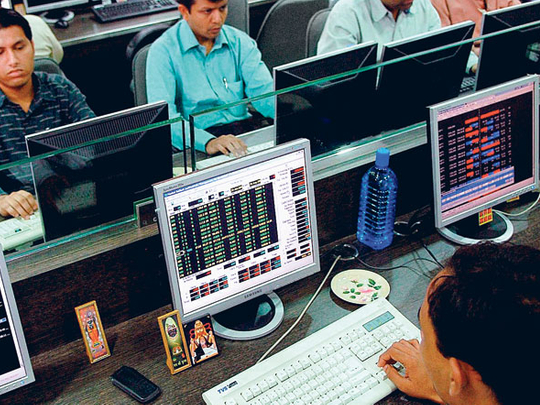Dubai: Amid raging doubts on how soon India’s economy would stage a comeback, the news of vaccines and hints of slightly better economic data were improving an earlier grim outlook for the country, while markets were seen sustaining its current rebound.
The contraction of India’s GDP by 7.5 per cent in July to September quarter, from a 23.9 per cent decline witnessed in April-June quarter, was widely seen among analysts and economists as an arrest of the slide and a steep contraction recorded in the prior quarter.
After the COVID-19 contagion-induced lockdowns ravaged the globe, the growth recorded by major economies including the US, Japan and Germany during the September-ended quarter had been raising market-wide expectations that India’s economy would also make a quick turnaround.
India officially enters recession
While India officially entered technical recession with two consecutive quarters of negative GDP growth, the data was better than what was anticipated by most analysts and hinted that the Indian economy was inching into recovery mode, with an albeit marginal, growth noted in the manufacturing sector.
“The slump in Indian GDP eased substantially in the second fiscal quarter, but output was still 9 per cent below its pre-virus level last quarter,” cautioned Shilan Shah, senior India economist at Capital Economics.
“Looking ahead, encouraging news on vaccines has brightened the outlook, but weak fiscal support and an impaired banking sector will continue to weigh on India’s recovery.”
Rockier road to recovery ahead
Shah had earlier opined that the collapse of Lakshmi Vilas Bank last week was another “stark reminder of the extreme weakness of the banking sector and underlines how even widespread vaccination would not restore India to economic health.”
A report by Oxford Economics released earlier this month revealed that India would be the worst-affected economy even after the pandemic eases, stating that annual output would be 12 per cent below pre-virus levels through 2025.
India’s economy had struggled to gain traction even before the pandemic, and the hit to global activity from the virus and the lockdowns that followed, combined, dealt the country a severe blow. The shutdown triggered a record increase in unemployment numbers as well, agency data had indicated.
Post-lockdown stimulus boost
The government announced stimulus packages after it lifted the lockdown imposed in March. In May, it introduced a $266 billion package to boost consumer demand and manufacturing. A large part of the package was actually loans provided by banks, many of them without collateral.
That was followed by a $35.14 billion package early this month to stimulate the economy by boosting jobs, consumer demand, manufacturing, agriculture and exports hit by the coronavirus pandemic.
Meanwhile, while consumer businesses saw a boost due to increased spending in the run-up to the October-November festive season, hopes of a broader recovery were dampened, with the construction and hospitality sectors taking a hit.
Markets gain despite economic hit
When it comes to analysts’ perspective of stock markets in India, the consensus view is that continued improvements in global risk appetite will further boost Indian stocks, despite the weakness of the economy.
Global stock markets have rallied since a sharp sell-off in March, ignoring deep recessions in most economies and driven largely by billions of dollars of fiscal and monetary stimulus and hopes for a swift economic recovery.
Emerging market assets have also gained on the weakness in the dollar, which hit a three-month low against a basket of currencies earlier this week. India’s key BSE Sensex has repeatedly hit record highs this month, surging more than 10 per cent on hopes for an economic revival on vaccine progress.
Market outlook grows more robust
From a low of 25,638.9 on March 24 at the start of the pandemic, the Sensex has rallied over 70 per cent to another record high of 44,601.6 this week, marking about an 8 per cent gain for the year.
“Foreign portfolio inflows into Indian markets, particularly into equities, have surged in November and we think they will remain robust over the coming months,” Shah further added.
“Looking ahead, we agree with market and consensus expectations that rates will be kept on hold at the conclusion of the RBI’s policy meeting next week. However, policy is likely to be kept looser than is currently being discounted in financial markets over the coming years.”
Vaccine view eases economic worries
Although India has not put in any pre-orders for the Pfizer and Moderna vaccines that were first to report encouraging late-stage trial results, Darren Aw, Asia economist at Capital Economics, explained how alongside the US, India has the largest order of any country for the Oxford/AstraZeneca vaccine.
Read more
“This vaccine is already being produced in India, by the Serum Institute, ready for it to receive government approval. And it should be easier to distribute than some other vaccine candidates since it doesn’t need to get kept extremely cold,” Aw added.
“The latest good news on the efficacy of the Oxford vaccine is therefore the most encouraging sign yet that India has a route to ending its COVID-19 epidemic and the social distancing that continues to weigh on the economy.”



